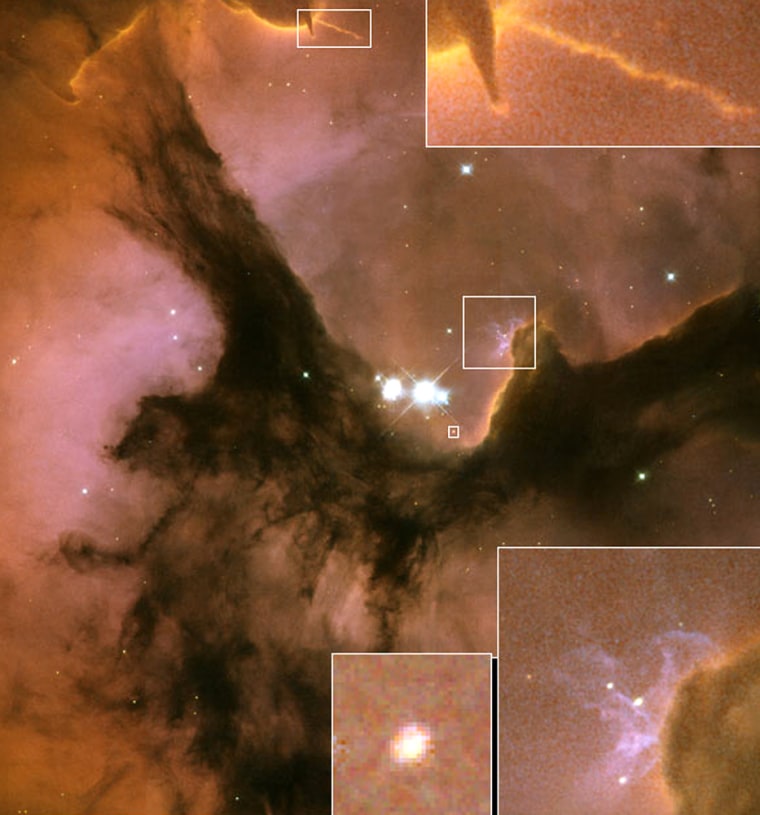The Hubble Space Telescope has revisited an old target, peering once again inside the intriguing Trifid Nebula to tease out a bit more detail and note change over time.
The nebula is rife with star formation. Astronomers study it to learn how stars form by noting the various stages of the process, from embryos to newborns, from infants destined to grow up like the sun and young giants that won't see the equivalent of their teens because they're too massive to live out a normal life span.
The scene is relatively nearby, about 9,000 light-years from Earth. A light-year is the distance light travels in a year, or about 6 trillion miles (10 trillion kilometers).
Fresh precision
In the new view, the center of the nebula is seen with fresh precision. A group of newborn massive stars are unmistakably bright. They are called O-stars and are the hottest variety known. They emit extreme doses of ultraviolet radiation that sculpt and illuminate surrounding gas and dust clouds.
Three bands of dust, the dark regions that dominate the image, intersect near the center of the nebula.
Astronomers presented the picture Thursday at a meeting of the American Astronomical Society in Denver. The imaging was led by Farhad Yusef-Zadeh of Northwestern University.
Several features intrigue Yusef-Zadeh and his colleagues.
The central O-stars are so boisterous that they've blown away all the nearby gas and dust that would form new stars, so not much is happening in their immediate surroundings. But farther afield, there is much activity.
One newborn star just below the O-stars, boxed and shown in a blowup at the bottom of the image, has an elongated shape — not quite circular. This suggests it is surrounded by a "protoplanetary disk," leftovers of star formation that might form asteroids, comets and planets.
Jet of starbirth
Near the top of the photograph, a jet of material emanates from a very young, low-mass star, one perhaps similar to our sun at birth. An enlargement shows the ejected matter protruding from the head of a dense pillar of gas and dust. The newborn star is hidden in the pillar. The knotty jet, shooting three-fourths of a light-year into space, has changed slightly since earlier images were taken in 1997, researchers said.
A recent study detailed how the sun was probably born in an environment like this.
A small pillar, pointing down toward the O-stars, protrudes from the main head. To the right of the O-stars, a dramatic column of gas and dust is lit starkly on the side that faces the stars. Atop the pillar, wispy filaments of glowing oxygen evaporate into space.
The Trifid Nebula is also known as M20 and NGC 6514. The images were made from data collected by Hubble in 2001 and 2002.
